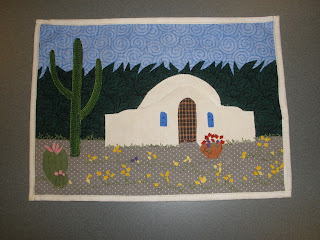"Digital Print Fashion", a current exhibit at the Phoenix Art Museum, provides a fascinating look at the history of printed fabric. I was pleasantly surprised at how fascinating I found it. I had seen Project Runway episodes where the designers were allowed to create their own fabric but didn't really pay attention to it as a process.
Digital printing was first used by carpet manufacturers in the 1970's. The fashion industry began experimenting in the 1990's. By the mid-2000's high fashion became interested as technological advancements improved accessibility and quality.
The earliest existing examples of printed fabric are from the 5th century Egypt, but reliable records indicated that printed fabrics appeared as early as 2500 BC. Many different techniques have been used around the world to create printed fabrics but here's a review of the predominant technologies in American and European fashion:
- Block Printing - can be traced to 400 BC. the method involves carving a design into a large wooden block. Ink is applied to the raised surface and pressed to the fabric. You have probably done some printing by carving a design into a potato.
- Copper Plate Printing - Introduced in Dublin in 1752 and used until the 1850's. The design is engraved on a copper plate and the recessed lines trap the dye which is then pressed to the fabric with the weight of an iron pressure roller. Only monochromatic designs are possible.
- Roller Printing - Thomas Bell is credited with the first successful roller printer in 1783. The method was used until the mid 20th century. Again, engraving creates the design; this time on a metal roller which can print a continuous pattern mechanically.
- Silk Screen Printing - Patented in 1907 this is the primary technique used in 20th century textile printing and is still the predominant method used for most printed textiles today. A 'screen' of very fine fabric is treated with a substance that allows ink to penetrate specific areas in the manner of a stencil.
So here we are in 2013.... Here are some examples of garments made with digital prints:


 |
| Hemline border print |
 |
| A digital printing machine |
Christina Binkley of the Wall Street Journal:
"New prints like these are not the sort of repetitive patterns we're accustomed to- stripes, dots or flowers repeated across the fabric. They're abstractions and they make you stand back, then look close, the way you would in a museum."
But..... here's something to think about.
This dress is digitally printed!
It does not resemble the previous examples does it? The textile was commissioned by Colonial Williamsburg. A rare fragment of painted silk was scanned and Photoshop worked its magic.
Think of the potential - missing elements of authentic period garments can be reproduced digitally to enhance their display.
Although this method accounts for only a small percentage of all printed textiles today, it is predicted that soon this "technology will provide the majority of the world's printed textiles."
If that is true how will the quilts of the future look?


















































